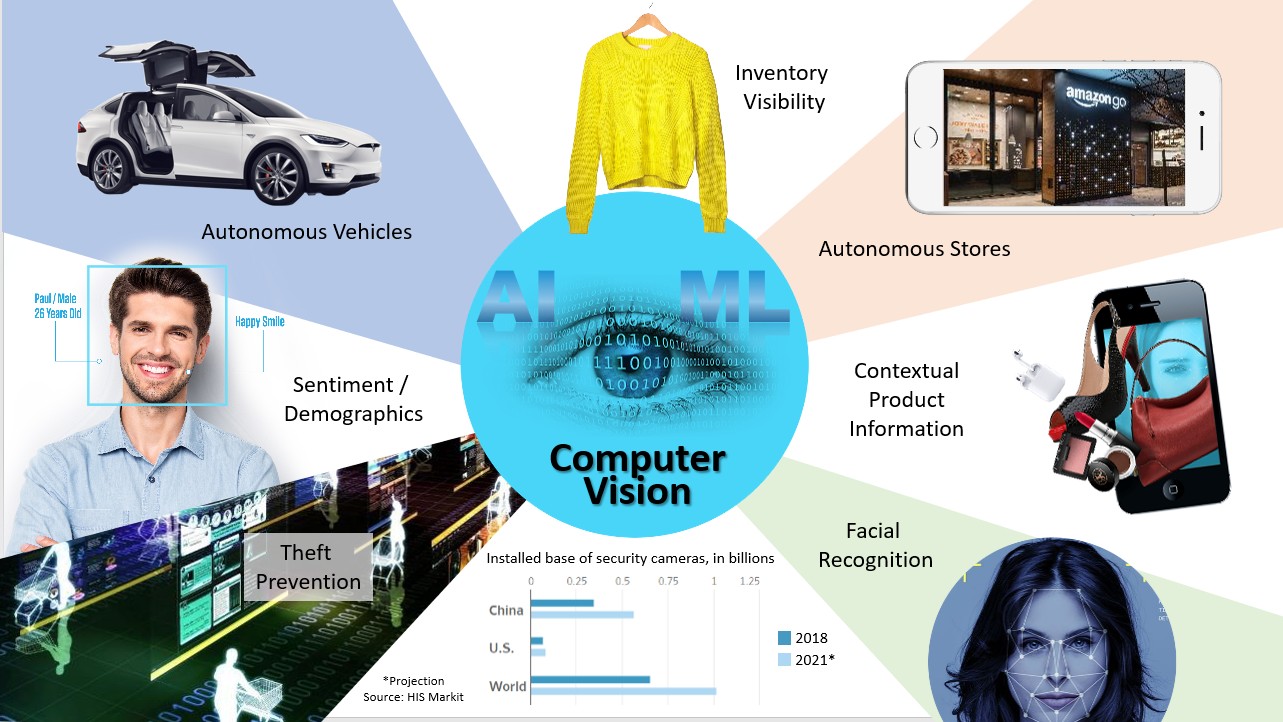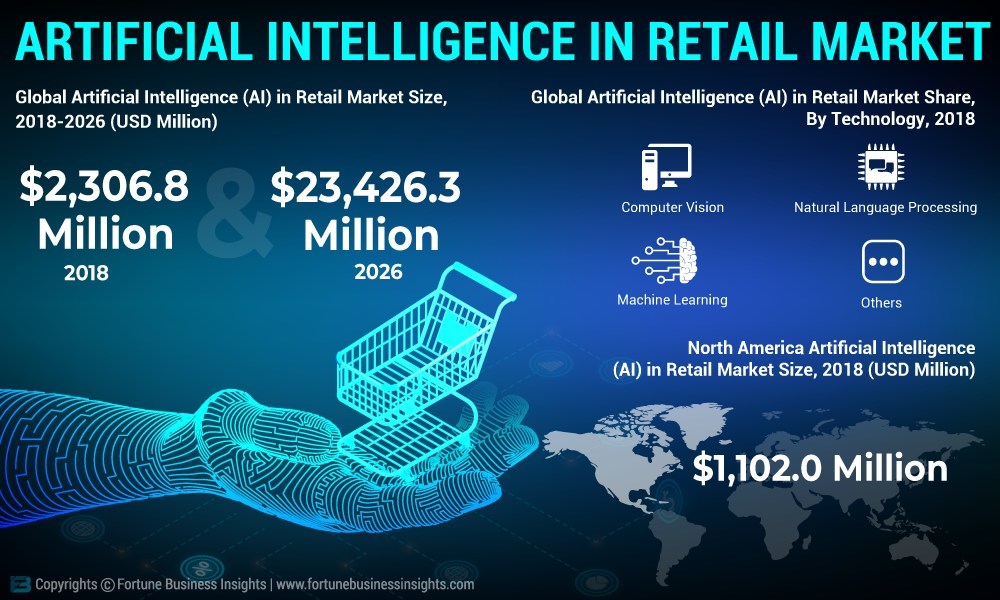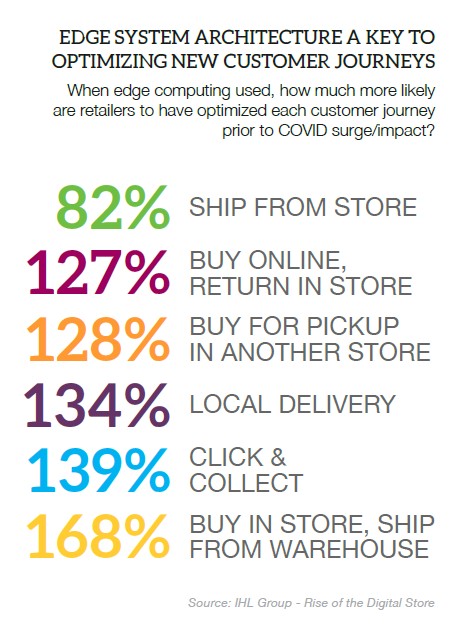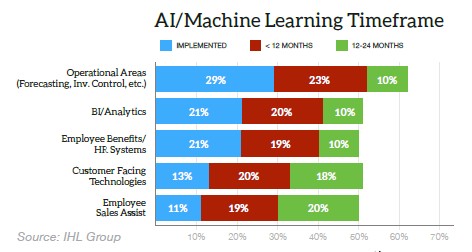“We are laser-focused on continuous improvements to customers’ experience across our stores. By leveraging Everseen’s Visual AI and machine-learning technology, we’re not only able to remove friction for the customer, but we can also remove controllable costs from the business and redirect those resources to improving the customer experience even more.” - Mike Lamb, Kroger's VP of Asset Protection

This post was inspired by a recent Kroger article announcing the deployment of visual artificial intelligence (AI) in 2500 stores and new IHL Group edge computing research. Multiple technological trends have been converging for some time and their combination is leading to transformative store operations improving solutions.
By 2021, one billion video cameras will be deployed around the world. Endless possibilities in creating immersive consumer experiences emerge when artificial intelligence and machine learning are coupled with these visual data gathering devices.
COVID-19 has become a disruptive accelerator of digital transformation trends that were already underway. It takes 66 days or approximately two months to form a new permanent habit. New shopping journey habits have emerged during the pandemic that will require intensified analysis of millions of data inputs to both protect transactions and remove negative experience friction.
What are some of the leading Visual AI or computer vision applications today? In retail, what's the Return on Investment (ROI)? What makes these technologies critical to the future of retail?
The Computers Have Eyes
"Computer vision is a field of artificial intelligence that trains computers to interpret and understand the visual world. Using digital images from cameras and videos and deep learning models, machines can accurately identify and classify objects — and then react to what they 'see.'”
This visual AI technology delivers valuable insights that dramatically improves decision making capabilities. My latest edition of the continuously updated "Disruptive Future of Retail" presentation includes this chart summarizing selected innovative applications.

In a pre-pandemic research report published by Fortune Business Insights, the retail AI market size was valued at $2,306.8 million in 2018 and will grow to $23,426.3 million by 2026. Computer vision and machine learning are key innovation drivers for this segment.

Fully expect the market size and the value of visual AI applications to increase because of COVID-19.
Moving to the Edge
Data is exploding in the retail industry. Walmart as one example generates more than 1 million customer transactions every hour, feeding databases estimated at more than 2.5 petabytes -- equivalent to 167 times the books in USA's Library of Congress.
In all industries, Internet-of-Things (IoT) connected devices are adding substantial amounts of data to the mix. In 2020, machine-generated data will account for over 40% of internet data.
The major cloud providers are already coming to the conclusion to distribute workloads to the appropriate edge where they run best. As the IHL Group points out in their latest research, edge computing is critical to retail's success in this decade. Example applications that they point to in their analysis are the very important new shopping journeys that have been accelerated by the pandemic. Note the margin challenges when these solutions are not optimized. 
Edge system architecture delivers substantial margin improvement benefits to these new retail services. Visual artificial intelligence in the cloud and at the edge plus deployment of instore sensors will dramatically improve analysis and decision-making capabilities throughout the physical store.. 
"The bottom line is that the retailers that not only survive and thrive in the next decade will be those that are able to apply Artificial and Machine Learning to operational data at the store level. Yes, ecommerce is a key part of retail’s growth, but the key advantage that retailers have over pure-play ecommerce competitors is the stores and proximity to the customer."
The Visual AI Return On Investment
The last two years have been very rewarding in working with leading retailers and technology providers in driving the future of retail.
Have spent a substantial portion of my career in point-of-sale, it is still today one of the areas that I follow as it is often that last "moment of truth" in engaging the consumer for both positive and negative results.
Applying visual artificial intelligence at point-of-sale is already delivering substantial positive results. In deployments protecting over $400 billion in retailers' revenue across 75,000+ checkout lanes, the average sales uplift has been 0.5% and the margin increase a substantial 20%.
 POS devices are only the beginning in what's possible in terms of measurable operational improvements. The future of retail includes digitally supported leadership branding coupled with hyper-personalized immersive consumer experiences across the entire store.
POS devices are only the beginning in what's possible in terms of measurable operational improvements. The future of retail includes digitally supported leadership branding coupled with hyper-personalized immersive consumer experiences across the entire store.
Visual AI and edge computing are critical technologies that will deliver frictionless commerce and optimize consumer journeys whose importance has dramatically increased because of COVID-19. We are on the edge of revolutionizing the future of retail.
















